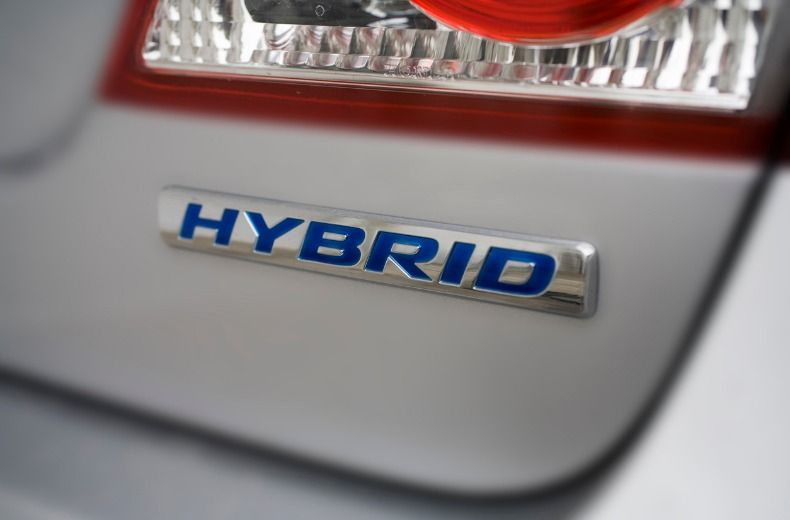

As we grapple with the environmental impacts of burning fossil fuels for transportation, the quest for greener, more sustainable options intensifies. Among the most promising alternatives is hybrid electric vehicle technology. These vehicles, which combine traditional internal combustion engines with electric power, are increasingly popular due to their potential to reduce greenhouse gas emissions and improve fuel efficiency. This article delves into the nature of hybrid electric vehicles, their pros and cons, and how they can shape the future of transportation.

Hybrid electric vehicles (HEVs) utilise more than one form of onboard energy to achieve propulsion. Typically, they combine an internal combustion engine (ICE) with an electric motor and a battery. The battery is charged through regenerative braking and by the internal combustion engine and is used to power the electric motor when necessary.
There are three primary types of hybrid electric vehicles:
Parallel hybrids: Both the internal combustion engine and the electric motor can power the car independently or in tandem.
Series hybrids: The internal combustion engine is not connected to the drivetrain directly. Instead, it charges the battery, which then powers the electric motor to provide propulsion.
Plug-in hybrid electric vehicles (PHEVs): These vehicles can be plugged into an electric power source to recharge their batteries, in addition to regenerative braking and the ICE. PHEVs typically have larger batteries and can travel more considerable distances on electric power alone.
Arguably the most significant advantage of HEVs is their improved fuel efficiency compared to conventional vehicles. By utilising an electric motor at low speeds, during idle times, and to assist the internal combustion engine during acceleration, HEVs can significantly reduce fuel consumption.
By reducing reliance on the internal combustion engine, HEVs can substantially lower the emission of harmful pollutants such as carbon monoxide (CO), nitrogen oxides (NOx), and particulate matter. Furthermore, they can also reduce greenhouse gas emissions, primarily carbon dioxide (CO2), contributing to climate change.
Many governments worldwide offer financial incentives to encourage the purchase of hybrid and electric vehicles. These can include tax credits, rebates, and exemptions from specific fees.
Hybrids use regenerative braking to capture energy usually lost during braking and convert it into electricity to recharge the battery. This process improves overall efficiency.
Unlike pure electric vehicles (EVs), which can suffer from limited range and long charging times, hybrids can switch to the internal combustion engine when the battery is depleted, extending their range and reducing "range anxiety".

Hybrid electric vehicles typically cost more than their conventional counterparts. This higher initial cost can be a barrier to many potential buyers, despite the possibility of savings over time due to reduced fuel consumption.
The batteries used in HEVs, while designed to last a long time, will eventually need to be replaced, which can be expensive. However, many manufacturers offer lengthy warranties on their hybrid batteries.
Most non-plug-in hybrid electric vehicles have a limited electric-only range, usually no more than a few miles. This means they will still rely heavily on the internal combustion engine, particularly for long trips. Plug-in hybrids have a more extended electric-only range but may require the ICE for longer journeys.
Hybrid electric vehicles can be heavier than their conventional counterparts due to the additional components, such as the battery and electric motor. This added weight can reduce efficiency to some extent. Additionally, the complexity of these systems can lead to higher maintenance costs over time.
While the number of hybrid models available has grown significantly in recent years, it still lags behind the variety of conventional vehicles on the market. This can limit consumer choice when shopping for a hybrid car.
While hybrid vehicles have a smaller environmental footprint than conventional ones, they are not without environmental concerns. The production of batteries, particularly lithium-ion batteries, can have a significant environmental impact, including mining rare earth metals and potential water pollution.
Despite their limitations, hybrid electric vehicles are an important stepping stone towards a greener future for transportation. They offer a practical solution for reducing emissions and improving fuel efficiency while addressing some of the range and infrastructure challenges fully electric vehicles face.
As battery technology advances and production costs continue to fall, the electric-only range of hybrids will likely increase, further reducing their reliance on internal combustion engines. Moreover, improvements in renewable energy production and the greening of electricity grids will help to offset the environmental impact of battery production.
In the meantime, governments and manufacturers must continue to invest in the development of charging infrastructure and the expansion of renewable energy sources to support the widespread adoption of electric and hybrid vehicles.
Hybrid electric vehicles have emerged as a critical solution for cleaner and more efficient transportation. While they are not without drawbacks, their benefits, including improved fuel efficiency, reduced emissions, and financial incentives, make them an increasingly attractive choice for consumers.
As technology advances and the world moves towards a more sustainable future, the role of hybrid electric vehicles will likely continue to grow. By bridging the gap between conventional cars and fully electric options, they offer a viable path towards reducing our reliance on fossil fuels and mitigating the impact of transportation on the environment.
Higher Initial Cost: Hybrid electric vehicles (HEVs) tend to cost more than traditional gas-powered cars. The advanced technology and dual nature of the powertrain make manufacturing these vehicles more expensive.
Battery Replacement Costs: While hybrid batteries are designed to last for a long time, they will eventually require replacement. Depending on the make and model of the vehicle, replacing the battery pack can be a costly affair.
Limited Electric-Only Range: Most hybrid vehicles have a limited electric-only driving range, especially when compared to fully electric vehicles. This means they may still rely on the internal combustion engine for longer journeys or high-speed driving.
Weight and Complexity: HEVs are typically heavier than conventional vehicles because of the additional components like the battery and electric motor. Also, the dual powertrain system adds to the complexity of the vehicle, which may result in higher maintenance costs in the long run.
Environmental Impact of Battery Production: The manufacturing process of hybrid batteries, particularly lithium-ion ones, involves the extraction of rare metals, which can have a significant environmental impact, including potential water pollution and habitat destruction.
Safety Training: Only individuals with appropriate training should work on hybrid vehicles, as they contain high-voltage systems that can be dangerous if not handled correctly.
Proper Equipment: Always use insulated tools and wear protective clothing when working on the electric components of a hybrid vehicle.
Disconnect the Battery: Before working on a hybrid vehicle, it is crucial to disconnect the battery to reduce the risk of electric shock.
Awareness of High Voltage Cables: High voltage cables in HEVs are typically coloured orange for easy identification. Avoid touching or tampering with these cables unless necessary.
Use of Non-Conductive Cleaner: A non-conductive cleaner should prevent electrical conductivity if cleaning is required.
When a hybrid car runs out of electric charge, it switches to its gasoline engine. This switchover is typically seamless and hardly noticeable to the driver. It's one of the significant advantages of hybrid vehicles, as they eliminate the "range anxiety" often associated with fully electric cars. However, running solely on the internal combustion engine may reduce fuel efficiency.
Improved Fuel Efficiency: HEVs use an internal combustion engine and an electric motor, providing optimal fuel efficiency. They utilize the electric motor at low speeds and during idling, and the combustion engine at higher rates, reducing fuel consumption.
Lower Emissions: Since they use an electric motor part of the time, HEVs produce fewer emissions than conventional vehicles. Reducing greenhouse gases contributes to a healthier environment and helps combat climate change.
Regenerative Braking: This feature captures energy typically wasted during braking and converts it into electricity to charge the battery. This energy recapture further enhances the vehicle's overall efficiency.
1.2 Dualjet 83 12V Hybrid SZ-T 5dr Auto
£209.63 Per Month (inc VAT)
£1,886.67Initial Rental
£174.69 Per Month (excl VAT)
£1,572.21 + VATInitial Rental
2.5 PHEV Exclusive Line 5dr Auto [Comfort Pack]
£496.91 Per Month (inc VAT)
£4,472.19Initial Rental
£422.70 Per Month (excl VAT)
£3,804.30 + VATInitial Rental
Long Range AWD 5dr Auto
£543.68 Per Month (inc VAT)
£4,893.12Initial Rental
£453.06 Per Month (excl VAT)
£4,077.54 + VATInitial Rental
Performance AWD 5dr Auto
£649.75 Per Month (inc VAT)
£5,847.75Initial Rental
£541.46 Per Month (excl VAT)
£4,873.14 + VATInitial Rental
1.4 TSI eHybrid Black Edition 5dr DSG
£378.74 Per Month (inc VAT)
£3,408.66Initial Rental
£315.62 Per Month (excl VAT)
£2,840.58 + VATInitial Rental
125kW SE Connect 58 kWh 5dr Auto
£314.02 Per Month (inc VAT)
£2,826.18Initial Rental
£261.68 Per Month (excl VAT)
£2,355.12 + VATInitial Rental
1.5 TSI EVO R-Line 2dr DSG
£440.36 Per Month (inc VAT)
£3,963.24Initial Rental
£383.40 Per Month (excl VAT)
£3,450.60 + VATInitial Rental
45 TFSI e S Line 5dr S Tronic [Tech Pro]
£467.19 Per Month (inc VAT)
£4,204.71Initial Rental
£566.01 Per Month (excl VAT)
£5,094.09 + VATInitial Rental
1.5 TSI 150 Black Edition 5dr DSG
£336.25 Per Month (inc VAT)
£3,026.25Initial Rental
£280.21 Per Month (excl VAT)
£2,521.89 + VATInitial Rental
210kW 85x Sportline Plus 82kWh 4x4 5dr Auto
£432.05 Per Month (inc VAT)
£3,888.45Initial Rental
£360.04 Per Month (excl VAT)
£3,240.36 + VATInitial Rental
1.6T GDi ISG GT-Line 5dr
£333.05 Per Month (inc VAT)
£2,997.45Initial Rental
£277.54 Per Month (excl VAT)
£2,497.86 + VATInitial Rental
1.0T GDi Exclusive 5dr DCT
£313.70 Per Month (inc VAT)
£2,823.30Initial Rental
£261.42 Per Month (excl VAT)
£2,352.78 + VATInitial Rental